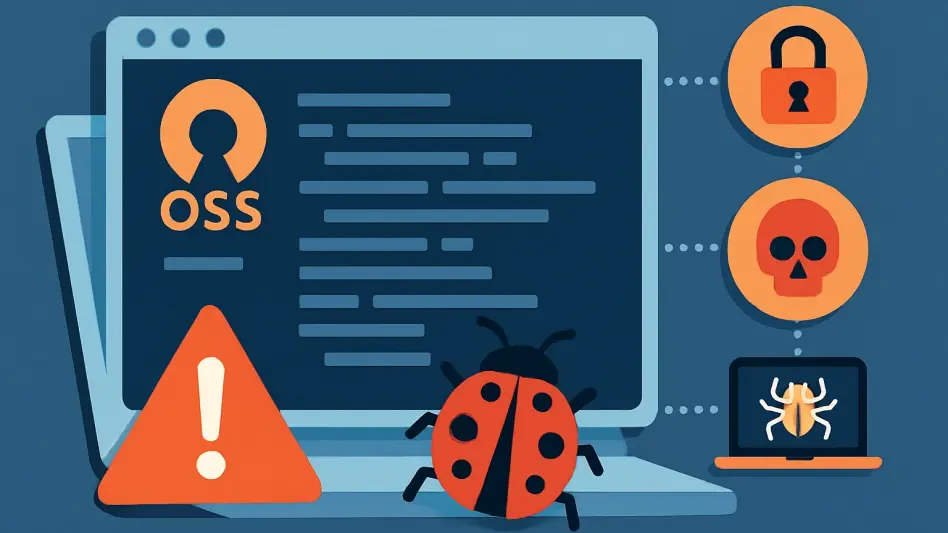Google has revealed a significant upgrade to its OSV-Scanner, a complimentary vulnerability scanner tailored for open source developers, sparking considerable interest in the tech community. Introduced initially three years ago, the scanner builds upon an open source vulnerability database that began four years ago, aiming to deliver detailed bug reports while bolstering security within the open source community. With the release of OSV-Scanner V2.0.0, expectations are high that this updated tool will push the boundaries of vulnerability management.
Enhanced Scanning Capabilities with OSV-SCALIBR Integration
Advanced Data Extraction and Layer-aware Scanning
The freshly released OSV-Scanner V2.0.0 amplifies the capabilities first introduced with OSV-SCALIBR, a comprehensive file system scanner designed to identify software inventory data accurately. This iteration integrates OSV-SCALIBR’s robust features, establishing the OSV-Scanner as the premier command-line tool for both code and container scanning within the open source domain. Notable enhancements include the ability to extract intricate data from various project files and artifacts, significantly broadening the scanner’s utility.
Moreover, the tool now supports layer-aware scanning of container images, particularly for those operating in Alpine, Debian, and Ubuntu environments. This feature ensures that each layer of an image is meticulously examined for vulnerabilities, providing a deeper level of scrutiny than previously possible. Developers can now receive specific information such as flaw advisories, severity breakdowns, and filter vulnerabilities based on packages, IDs, and importance. These precise details enable targeted responses to vulnerabilities, enhancing the overall security posture of open source projects.
Interactive and Comprehensive Reporting
An additional advancement in OSV-Scanner V2.0.0 is the introduction of interactive local HTML reports, which offer detailed and user-friendly scan results. These reports are designed to facilitate a better understanding of the identified vulnerabilities, allowing developers to delve into the specifics of each finding. By providing graphical representations and interactive elements, these reports make it easier to prioritize and address security issues comprehensively.
Furthermore, the scanner now includes guided remediation support for Maven, a feature that aids developers in resolving security vulnerabilities in both direct and transitive dependencies. This functionality simplifies the process of maintaining secure and up-to-date project environments. The ability to read and write pom.xml files, fetch metadata from private registries, and update dependencies to their latest versions ensures that Maven users can seamlessly integrate security practices into their development workflows. This holistic approach to reporting and remediation empowers developers to take proactive steps in safeguarding their projects.
Future Integrations and Community Engagement
Expanding Ecosystem Support and CLI Interface Enhancements
Google’s commitment to evolving OSV-Scanner is evident through its plan for continuous development, which promises to further integrate OSV-SCALIBR into the scanner’s CLI interface. This ongoing development will enable more nuanced and comprehensive scanning capabilities, particularly as the tool expands its ecosystem support. Future updates will focus on accounting for every file present in container images, ensuring no element goes unchecked in the quest for vulnerability identification. Additionally, reachability analysis integration is on the horizon, which will enhance the tool’s ability to determine whether detected vulnerabilities can be exploited under current configurations.
Support for Vulnerability Exchange (VEX) is another anticipated enhancement, providing developers with streamlined access to vulnerability information across different sources. This integration aims to create a more cohesive and collaborative open source security landscape. By standardizing the way vulnerability data is shared and interpreted, VEX support fosters better communication and faster responses to emerging threats. These planned improvements reflect a strategic approach to strengthening the scanner’s capabilities and ensuring it meets the evolving needs of the open source community.
Encouraging Community Contribution and Feedback
The collaborative nature of open source development has always been a cornerstone of innovation, and Google encourages community feedback and contributions to further refine OSV-Scanner and OSV-SCALIBR. Making both tools available on GitHub underscores Google’s commitment to transparency and collective advancement. Developers from around the world are invited to participate in the ongoing enhancement of these tools, ensuring that they remain responsive to the diverse challenges encountered in open source development.
Community involvement is not just about improving the tools but also about fostering a culture of shared responsibility for security within the open source ecosystem. By contributing to the refinement of OSV-Scanner, developers can directly impact the effectiveness of vulnerability management practices used by countless projects. This collective effort ensures that the tools continue to evolve in ways that are practical, efficient, and aligned with the real-world needs of the developer community. Moving forward, this emphasis on community engagement will play a crucial role in maintaining and enhancing the security of open source projects.
Broader Implications and Future Considerations
Strengthening Open Source Security Practices
The release of OSV-Scanner V2.0.0 represents a significant step forward in the ongoing effort to secure open source software. By integrating advanced features like layer-aware scanning, comprehensive reporting, and guided remediation, the tool equips developers with the means to tackle vulnerabilities more effectively. However, the implications of these advancements extend beyond individual projects. They signify a broader movement towards establishing more rigorous security standards and practices within the open source community.
These improvements highlight the growing recognition of security’s importance in open source development. As more organizations and individuals rely on open source software, ensuring the robustness and reliability of these projects becomes paramount. Tools like OSV-Scanner V2.0.0 set a new benchmark for what developers can expect and strive for in terms of security. They encourage a proactive approach to vulnerability management, where potential issues are identified and addressed swiftly, minimizing risk and maintaining trust in open source solutions.
Looking Ahead to Future Developments
Google has recently unveiled a major upgrade to its OSV-Scanner, a free vulnerability scanner specifically designed for open source developers. This news has generated significant excitement within the tech community. Initially introduced three years ago, the OSV-Scanner builds on an open source vulnerability database that was started four years ago. The goal is to provide comprehensive bug reports and enhance security measures within the open source ecosystem.
With the rollout of OSV-Scanner V2.0.0, there is a lot of anticipation that this enhanced tool will set new standards in vulnerability management. This new version promises more sophisticated features and a better user experience, which will assist developers in identifying and addressing security issues more effectively. As open source software becomes increasingly integral to modern development practices, having reliable tools like the OSV-Scanner is crucial for maintaining robust security and ensuring the integrity of codebases. The tech community is eager to see how this latest update will impact the landscape of open source security.







